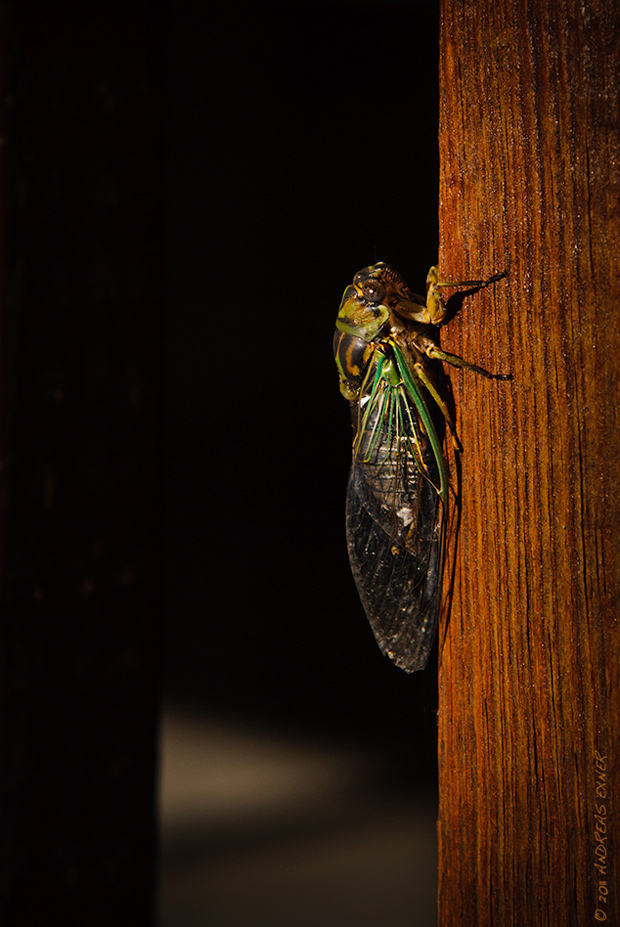Another place in the Great Smoky Mountains where elks are often present is the vicinity of the Oconaluftee Visitor Center on the south side of the mountains. It is a wide open space in the valley and a herd of elks can be seen there quite often. Despite a dark overcast and the low light in the late afternoon most pictures of this grazing elk turned out with a decent sharpness. One of the best experiences with the new Nikon D300s is the way its focus works. It is much better than it was with my beloved D200. This elk bull was really close and I didn't have to use the full 500mm focus length of the SIGMA 50-500. The elk didn't move too fast and this gave me a great opportunity to play and check out the focus system.
Another reason that sharpness turned out better than in similar situations before might be the fact that I'm using a taller tripod now. The Calumet 8156, a 4-section carbon fiber tripod, allows me to stand upright between its legs while shooting. I feel much more relaxed and the upright position while shooting makes it easier to apply correct long lens shooting technique.
Beside enjoying the close presence of this majestic elk I also got a kick out of the excitement from other visitors that had their first elk encounter in life. I believe it is important that many people, especially young folks, experience wildlife encounters. This will ensure that more people become aware what we loose if we don't protect the habitat of these animals and also understand that economical things cannot play the only role in our lives.
















